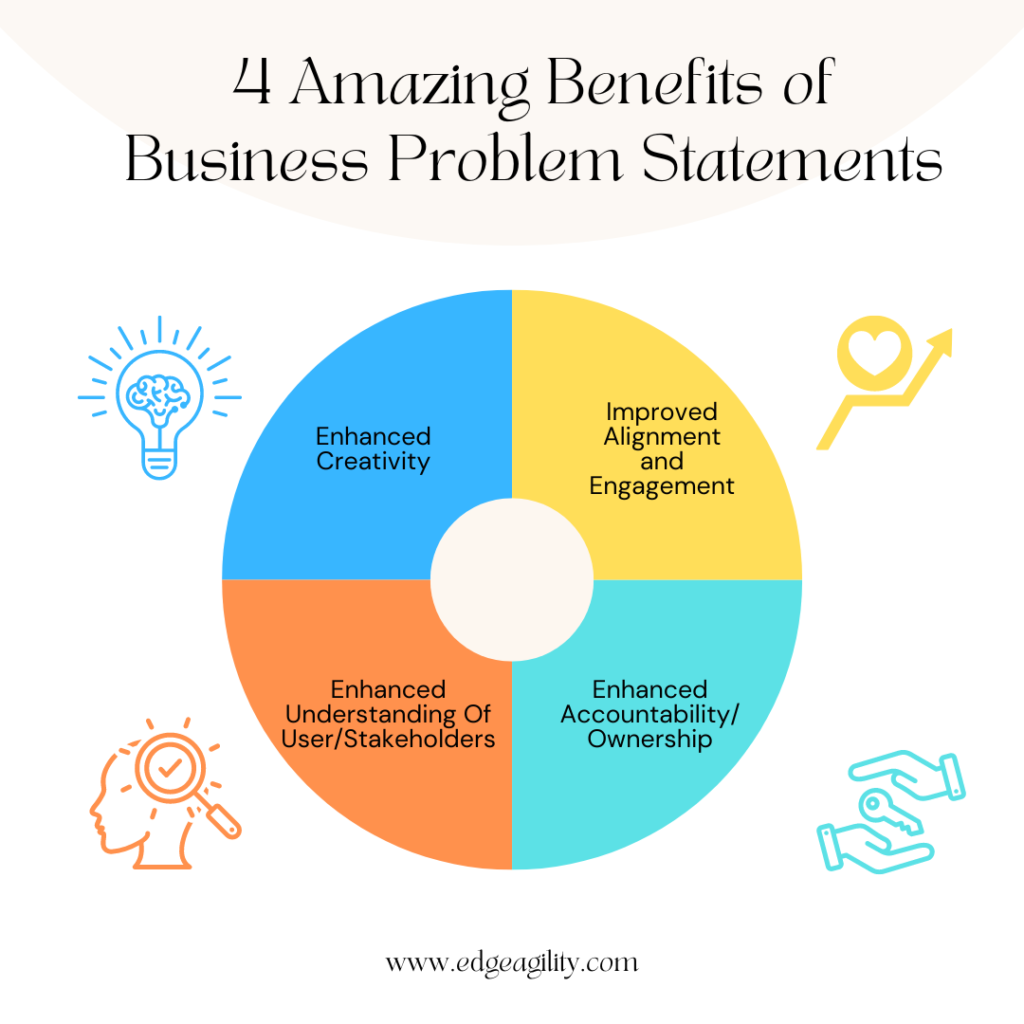
In the dynamic landscape of business, identifying and addressing issues promptly is crucial for sustained success. One of the most effective tools for achieving this is the Business Problem statement.
What Is A Business Problem Statement?
A business problem statement is a concise description of an issue that negatively impacts an organization. They reframe our work as a problem to solve rather than as a solution such as a feature(s) to build.
This eventually led to an Outcome Over Output mindset.
Business Problem Statment helps build an Outcome Over Output mindset.
Business Problem Statment helps build an Outcome Over Output mindset.
Business Problem Statement Template
In the Lean UX Book, the authors have shared a Business Problem Statement Template that works really well:
[Our service/product] was designed to achieve [these goals]. We have observed [in this way] that the product/service isn’t meeting these goals which is causing [this adverse effect/business issue] to our business.
It contains 3 parts
- Current Goals: Original ‘Why’ of Product/Service.
- Key Insights/Problem Description: How do you know that these goals are not met? What is the problem?
3. Impact: The negative effects the problem has on the organization.
Examples:
Example 1: Retail Company
Company: ABC Retail
Business Problem Statement: Our in-store shopping experience was designed to achieve quick and convenient purchases for our customers. We have observed that customers are experiencing slow and complicated checkout processes, which is causing a 10% drop in sales conversion rates and an annual revenue loss of approximately $1.2 million.
Example 2: Healthcare Provider
Company: HealthCarePlus
Business Problem Statement: Our appointment scheduling system was designed to ensure timely and convenient access to healthcare services. We have observed that patients are experiencing long wait times for appointments, with an average wait time of 30 days for non-urgent consultations, which is causing a 20% decrease in patient satisfaction scores and a 10% decline in patient retention, resulting in an estimated annual loss of $500,000.
Example 3: Hospitality Industry
Company: LuxuryStay Hotels
Problem Statement: Our hotel services designed to ensure a comfortable and satisfying stay for our guests. We have observed through online reviews and customer feedback that guests are experiencing issues with room cleanliness and slow response times from housekeeping services, which is causing a 15% decrease in occupancy rates and an estimated annual revenue loss of $1 million.
Benefits of Business Problem Statements

Enhanced Creativity: When we consider work as a problem statement, it takes the focus away from ‘What we should build’ and ‘How we should build’ to ‘Why we should build’ and this enhanced focus on ‘Why’ brings creativity as we are creating a room for exploring options to solve the problem.
Improved Alignment and Engagement: As teams are more closer to ‘why’ it helps them in see the value in the work. Now they are not completing the Jira tickets, they are solving the problems and helping the business to grow.
Enhanced Accountability/Ownership: A clear business problem statement helps more people take ownership of finding a good solution. By clearly outlining the issue and its impact, everyone understands what needs to be fixed and why it matters. This shared understanding encourages team members to take responsibility and contribute their ideas and efforts towards solving the problem. When everyone is on the same page, it’s easier to work together and find a solution that fits well.
Enhanced Understanding Of User/Stakeholders: A clear business problem statement helps colleagues understand and empathize with our users and stakeholders. It describes the problems users face and how these issues affect the business. This understanding makes it easier for team members to see things from the users’ perspective, motivating them to work together to find effective solutions. By highlighting the real-world impact, everyone feels more connected to the users and committed to improving their experience.
Conclusion
A well-crafted business problem statement is a powerful tool for identifying and addressing issues within an organization. It provides clarity, guides decision-making, aligns efforts and facilitates effective communication. By following a structured approach to crafting problem statements, businesses can ensure they tackle the right problems in the most effective way, driving growth and success.
Learn More About Product Discover
Join Scrum.org Professional Product Discovery and Validation Course


